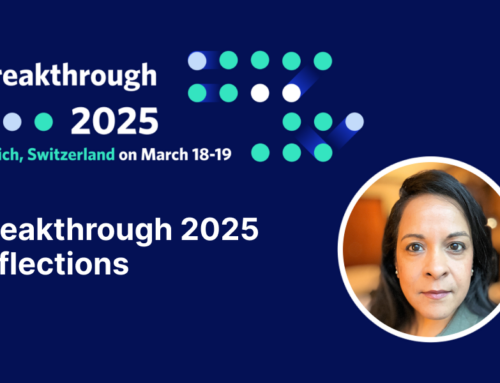The coronavirus pandemic ushered in a new era of public scrutiny for the pharmaceutical industry. The general population was traditionally most invested in novel medicines in clinical trials – news reports and medical journal articles about new, promising drugs would make headlines, especially when they looked to treat afflictions that had few readily available treatment options.
But like so much else, the pandemic fundamentally changed public opinion and perception of pharmaceutical development. Now, pharmacovigilance is the most visible phase of modern drug development. The SARS-CoV-2 pandemic – and biopharmas’ near-immediate response to develop vaccines and treatments – increased public attention to and scrutiny of pharmaceutical safety.
Most biopharmas are additionally increasingly challenged by static or shrinking budgets. The pandemic’s global financial effect resulted in the reduction or reallocation of funds for most, if not all, organizations. This only further highlighted an industrywide need for greater efficiencies across the spectrum of Safety functions.
Safety teams have faced increased complexity in recent years, including more complex drugs, data from accelerated and decentralized trials, ever-growing data sets, and more global and diverse patient groups and partnerships. And the workload is expanding in volume, too – Safety caseloads are growing, on average, 15% year over year. These teams are managing these compounding variables, all while working with a static or shrinking budget. Artificial intelligence (AI) – including repetitive, predictive, and cognitive automation – will be table stakes to keep up with the industry’s changing demands while keeping costs low.
Efficiency and accuracy are crucial for meeting compliance standards, ensuring patient safety, and earning the public’s trust. Technology will play a critical role in enabling the kind of rapid breakthroughs COVID-19 demanded while not sacrificing safety or compliance.
COVID-19 and Public Perception
The coronavirus pandemic changed public perception of pharmaceuticals in two primary ways: it drastically increased expectations for the speed at which treatments should be brought to market, and it heightened sensitivity to adverse events.
The biopharmas that brought COVID-19 vaccines to market in 2020 were able to do so with incredible speed because of the convergence of several factors. Emergency government funding certainly played a role in making it feasible for the companies to focus extraordinary efforts on developing a vaccine. The novel use of mRNA had the biggest impact on the compressed development timeline, since it eliminated the need to identify a harmless piece of the novel coronavirus or otherwise render the virus ineffective before creating the vaccine itself. But even once the vaccine was ready to be tested, technology further sped up the process by enabling simultaneous, remote, parallel trials and faster data analysis through artificial intelligence and machine learning.
Thanks to new research, an influx of government funding, and technological advancements, scientists accomplished a task that once took a decade or longer in under a year. This compression of the entire research and development (R&D) process, from ideation through clinical trials, both drastically altered public expectations of reasonable time to market and put Safety in the spotlight. These expectations and reservations will persist even after the pandemic has subsided.
Pharmacovigilance Challenges
The greatest challenge in pharmacovigilance today is handling a steady increase in the quantity of Safety data. Case volumes have been growing nearly 15% year over year, while the teams that manage the workload face static budgets and inefficient processes. Rote tasks like data input and reporting take up hours of time, often keeping the organization’s valuable employees from focusing on the work that requires human input and oversight, like analysis and risk assessment.
Adverse Event Case Management
Globalization has increased the range and complexity of case management considerably, which in turn has made collecting adverse event reports more challenging than ever. Plus, technology has expanded the scope of reporting mechanisms, opening the possibilities for easier self-reporting and even new reporting channels, like social media.
In the case of COVID-19, managing these reports is further complicated by the sheer magnitude of doses being administered in such a short period. To date, over 200 million people in the United States have been fully vaccinated against COVID-19. By comparison, the last federal push to vaccinate everyone in the country – in 1976, when President Gerald Ford aimed to inoculate the nation against swine flu – resulted in 40 million immunized individuals over the course of a year. According to Bloomberg, more than 8 billion doses of the COVID-19 vaccines have been administered worldwide as of December 2021.
Much of the strain of identifying these adverse events could be lifted with automation technology that can collect, organize, and analyze adverse event data, even if it comes in an unstructured form. In the 2021 ArisGlobal State of the Industry report, 59% of survey respondents said their intake and triage efforts would be greatly benefitted by automation.
Aggregate Reporting
Compiling sums of data – especially those as large as produced by a global vaccine response – into reports that may identify a pattern again takes valuable human resources away from more cerebral tasks. Of those surveyed in the industry report, 46% saw an opportunity to automate processes around reporting and analytics visualizations.
Signal Intelligence and Risk Management
Analyzing the risks and benefits of any given treatment requires taking huge amounts of data into account. When looking at data sets that massive, artificial intelligence and machine learning can go a long way in enhancing efficiency and transparency. Of the industry report survey respondents, 74% said automation in signal identification and risk management would be very beneficial to their organization.
Automation in signal intelligence and risk management increases efficiency by detecting signals faster, and artificial intelligence and machine learning enable deeper pattern detection than is readily apparent to the human eye or mind in such large data sets. Together, these advanced technologies significantly improve patient safety by making signals easier to identify and assess, ultimately reducing the occurrence of false positives and bringing genuine risks to light earlier.
Automation Trends Emerging in Pharmacovigilance
Automation is reshaping drug Safety. While it has traditionally been seen as a cost center and mandatory expense, new technology is enabling Safety’s evolution into a value opportunity for life sciences organizations. By automating collection and report generation, employees are free to focus on the bigger questions, like risk analysis. And by leveraging artificial intelligence and machine learning, these employees can work smarter, realizing gains in efficiency, transparency, and cost effectiveness, all while maintaining compliance. Better yet, these new standards are elevating patient safety, mitigating the risks of medication and enabling greater global health.
As public expectations rise, pharmacovigilance will continue to be a highly visible phase in drug development. Life sciences organizations can benefit by investing in the technology that will take Safety from a business cost to a strategic value driver.
To learn more about pharmacovigilance automation and see ArisGlobal’s LifeSphere Safety platform in action, visit arisglobal.com/lifesphere/safety.







